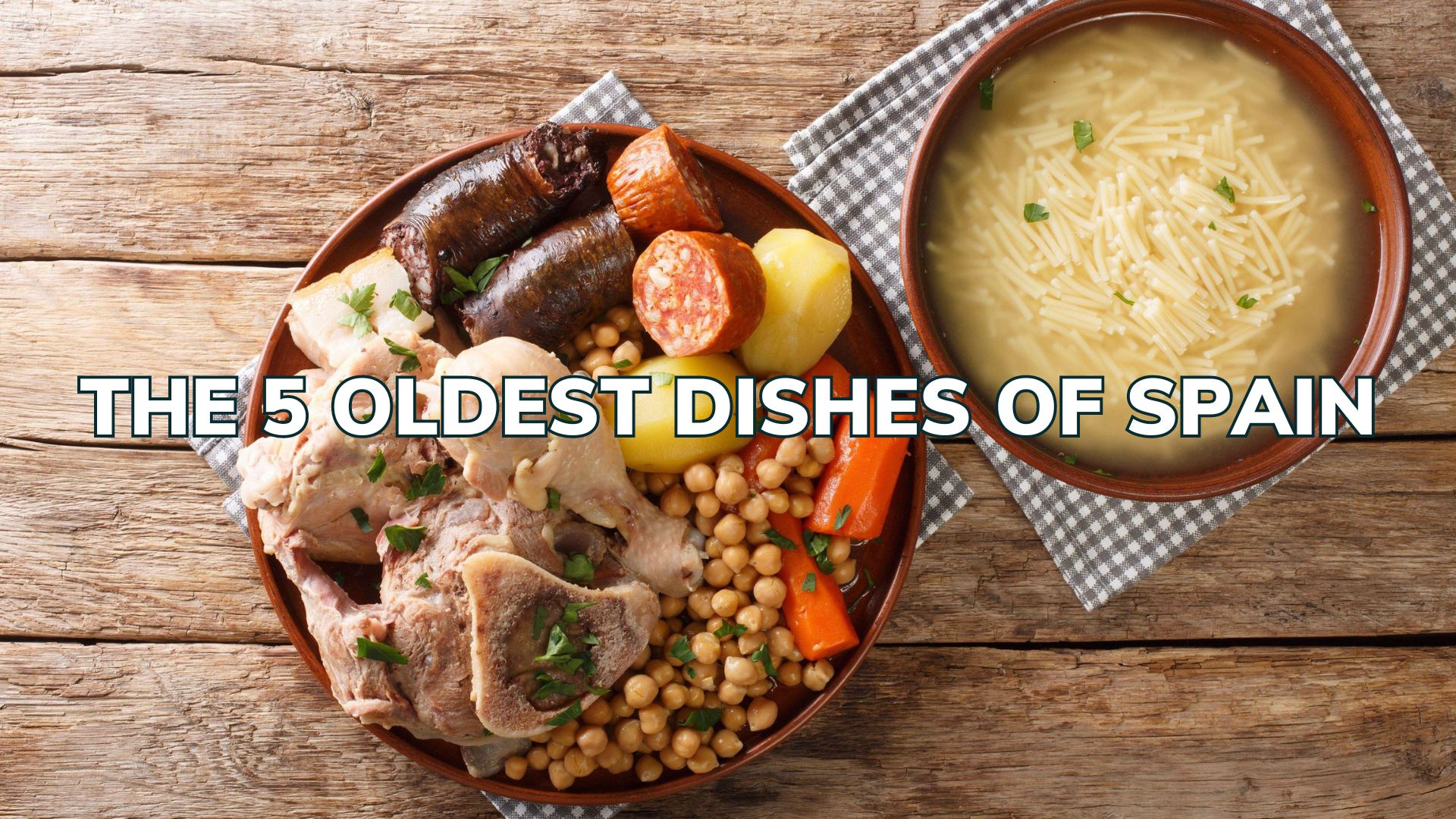
Spanish gastronomy is a culinary treasure trove that has been shaped over the centuries by a rich history of cultural and regional influences. From ancient Roman traditions to Moorish heritage and local customs rooted in the country’s regions, today we bring you the 5 oldest dishes of Spain.
COCIDO

One of Spain’s most emblematic dishes. With its roots in the Middle Ages as a common dish among the working classes, this combination of pulses, vegetables and meat gradually gained popularity as a nutritionally complete and affordable option for the population.
It should be noted that over the centuries, cocido has been adapted to the different regions of Spain, giving rise to regional variations such as cocido madrileño, cocido montañés cántabro, cocido maragato leonés, among others.
POTATO OMELETTE

The tortilla was invented around 1798 in Northern Spain. Some theories suggest that the dish was created during the Spanish War of Independence as a solution to feed the troops quickly and cheaply. Originally made with eggs, potatoes, olive oil, salt and sometimes onion, it is considered a rich and versatile choice in the country and a symbol of the country’s home cooking.
MARMITAKO

The origin of this dish can be traced back to the ancient fishermen and sailors who sailed the waters of the Bay of Biscay. They had little food to eat, so the cook would put what little was available into the marmita (pot).
The fish traditionally used in marmitako is white tuna, a species that is abundant in the waters of the Bay of Biscay. Potatoes, onions and peppers are also staples of Basque cuisine and are widely used in the preparation of this dish.
THE PAELLA

We could say that paella is undoubtedly one of the most recognisable dishes of Spanish gastronomy.
It is said to have emerged in the 18th century in the rural areas of the Valencian Community, where peasants cooked rice in paella pans with locally available ingredients such as rabbit, chicken, green beans and snails.
Despite having different variations in its preparation, depending on the geographical areas, paella shares a great point in common, its preparation and enjoyment are social experiences that encourage conviviality and sharing among family and friends, and one of the best places to do so, is our restaurant, Font Del Llop Terraza.
CHURROS

Finally, we could not leave out the sweet part of this country’s gastronomy.
Churros, modern but with Arab roots, emerged during Al-Andalus in the Iberian Peninsula. The Arabs introduced the technique of “churra” or “churro”, squeezing dough through a nozzle and frying in oil.
Over the centuries, the recipe and the way of preparing churros evolved in Spain. Churros became a popular food at fairs, markets and festivals and are cooked with a dough of flour, water, salt and sometimes a little sugar, which is fried in hot oil until golden brown and crispy and served with hot chocolate.
